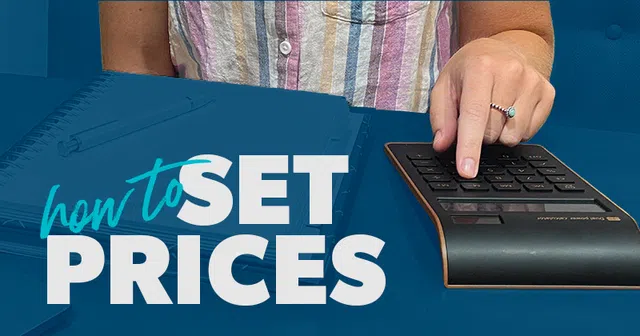Introduction
How To Make Money By Making Thumbnail: Creating eye-catching thumbnails is a crucial skill for anyone involved in online content creation, particularly on platforms like YouTube, Twitch, or social media.
Thumbnails act as the first impression of your content, significantly influencing viewers’ decision to click and watch your videos. If you’re skilled at designing engaging and attractive thumbnails, you can monetize this talent in several ways.
Affiliate Marketing For Beginners
To make money by creating thumbnails, you’ll first need to develop a solid understanding of what makes an effective thumbnail. This includes knowing how to use design principles to grab attention, understanding the importance of branding, and mastering tools like Photoshop or Canva. Once you’ve honed your skills, there are several paths to monetization: {How To Make Money By Making Thumbnail}
Understand the Market

Side Incomes from Home: Exploring Opportunities
Understanding the market is crucial for succeeding in any business, including creating thumbnails. Here’s how you can grasp the market for thumbnail design:
1. Identify Your Target Audience
- YouTube Creators: Many YouTube content creators need eye-catching thumbnails to increase click-through rates. They often seek designs that stand out and drive engagement.
- Social Media Influencers: Influencers on platforms like Instagram and TikTok also require compelling thumbnails for their videos and posts.
- Businesses and E-commerce: Companies and online sellers need effective thumbnails for promotional videos, product listings, and advertisements. {How To Make Money By Making Thumbnail}
2. Analyze Trends and Preferences
- Design Trends: Stay updated on current design trends like color schemes, typography, and imagery. Thumbnails often follow trends to remain appealing.
- Competitor Analysis: Look at successful thumbnails in your niche. Notice what elements they use, such as bright colors, bold text, or specific styles.
How to do affiliate marketing from mobile?
3. Understand Platform Requirements
- YouTube: Thumbnails should be 1280×720 pixels, with a minimum width of 640 pixels. They need to be clear, visually engaging, and representative of the video content.
- Social Media: Each platform has different size and style requirements for thumbnails. For example, Instagram prefers square or vertical images, while Facebook uses different dimensions for video ads.
4. Recognize Client Needs
- High Engagement: Clients generally want thumbnails that attract viewers and drive clicks. This often involves creating thumbnails that are visually striking and clearly convey the content.
- Branding: Some clients might want thumbnails that align with their brand identity, including specific colors, fonts, or logos. {How To Make Money By Making Thumbnail}
5. Evaluate Pricing Strategies
- Competitive Rates: Research what other thumbnail designers charge. This helps you set competitive pricing that reflects your skills and the market demand.
- Package Deals: Offer different pricing packages based on complexity and quantity. For example, a single thumbnail might cost less than a bundle of ten.
6. Stay Informed About Industry Changes
- Algorithm Updates: For platforms like YouTube, algorithm changes can affect what types of thumbnails perform best.
- Emerging Trends: Keep an eye on new tools and techniques in graphic design that could impact thumbnail effectiveness.
By understanding the market, you can tailor your thumbnail designs to meet the needs of your clients, stay competitive, and effectively market your services. {How To Make Money By Making Thumbnail}
Develop Your Skills

Side Income in 2024: Exploring Lucrative Opportunities
Developing your skills is essential to becoming a successful thumbnail designer. Here’s how you can enhance your abilities and stay competitive:
1. Learn Graphic Design Fundamentals
- Design Principles: Understand basic design principles such as color theory, typography, layout, and composition.
- Tools: Get comfortable with graphic design software like Adobe Photoshop, Illustrator, Canva, or GIMP. Each tool has its strengths, so choose one that fits your style and needs.
2. Master Thumbnails Specifics
- Resolution and Size: Learn the optimal dimensions and resolutions for thumbnails on different platforms (e.g., 1280×720 pixels for YouTube).
- Attention-Grabbing Elements: Practice creating thumbnails with bold colors, engaging text, and eye-catching visuals to maximize viewer interest.
3. Study Successful Thumbnails
- Analysis: Examine thumbnails from popular YouTube channels or social media accounts. Note what makes them effective, such as facial expressions, contrasting colors, or prominent text.
- Reverse Engineering: Try to replicate successful thumbnails to understand their design techniques and apply them to your own work.
4. Experiment and Innovate
- Creativity: Don’t be afraid to experiment with different styles and approaches. Innovation can set your designs apart from the competition.
- Feedback: Share your designs with peers or online communities to get constructive criticism and suggestions for improvement.
5. Take Online Courses and Tutorials
- Courses: Platforms like Udemy, Coursera, or Skillshare offer courses in graphic design and thumbnail creation.
- Tutorials: Follow tutorials on YouTube or design blogs to learn new techniques and stay updated on industry trends.
6. Build a Portfolio
- Diverse Samples: Create a diverse range of thumbnail designs to showcase your versatility and skill level.
- Showcase Work: Use a portfolio website or platforms like Behance and Dribbble to display your best work and attract potential clients.
7. Practice Regularly
- Daily Design: Set aside time each day to practice designing thumbnails. The more you design, the better you’ll become.
- Projects: Work on personal projects or redesign thumbnails for existing content to gain experience and refine your skills.
8. Keep Up with Design Trends
- Industry Trends: Stay informed about the latest design trends, tools, and techniques. This will help you keep your designs fresh and relevant.
- Competitor Work: Regularly review the work of other designers to see what’s trending and what’s gaining traction in the market.
By focusing on these areas, you’ll build strong design skills and create thumbnails that are not only visually appealing but also effective in attracting and engaging viewers. {How To Make Money By Making Thumbnail}
Build a Portfolio

Unearned Income: Recording and Understanding Its Placement on the Balance Sheet
Building a portfolio is essential for showcasing your skills and attracting potential clients as a thumbnail designer. Here’s a step-by-step guide to help you create an impressive portfolio:
1. Gather Your Best Work
- Selection: Choose a diverse range of thumbnail designs that highlight your skills and versatility. Include various styles, formats, and subjects to demonstrate your capabilities.
- Quality Over Quantity: Focus on showcasing your best work rather than having a large number of projects. Quality designs will make a stronger impact.
2. Create a Portfolio Website
- Platform: Use website builders like WordPress, Wix, or Squarespace to create a professional-looking portfolio. These platforms offer templates that are easy to customize.
- Design: Ensure your website is visually appealing and user-friendly. It should have a clean layout with easy navigation to view your work.
- Sections: Include sections such as an “About Me” page, a portfolio gallery, client testimonials, and a contact form. {How To Make Money By Making Thumbnail}
3. Use Portfolio Platforms
- Behance: A popular platform for creative professionals to showcase their work and connect with potential clients.
- Dribbble: Another platform where designers can display their work and gain visibility in the design community.
- ArtStation: Useful for those in the visual arts and design field, providing a platform to share high-quality designs.
4. Organize Your Work
- Categories: Group your thumbnails into categories, such as YouTube, social media, or e-commerce. This helps potential clients quickly find the type of work they’re interested in.
- Projects: For each project, include a brief description of the work, the client (if applicable), and any challenges you faced or solutions you provided.
5. Provide Context
- Case Studies: Where possible, include case studies or detailed descriptions of specific projects. Explain your design process, the objectives, and how your design contributed to the project’s success.
- Before and After: Show before-and-after versions of your work to highlight how your designs improved the visual appeal or effectiveness of a thumbnail.
6. Include Client Testimonials
- Feedback: Request testimonials from satisfied clients to add credibility to your portfolio. Positive reviews can significantly influence potential clients’ decisions.
- Quotes: Include brief, impactful quotes from clients about your work and professionalism.
7. Showcase Personal Projects
- Creativity: Display personal projects or redesigns to show your creativity and initiative. These can demonstrate your skills and interests beyond client work.
- Experimentation: Personal projects are a great opportunity to experiment with new styles or techniques. {How To Make Money By Making Thumbnail}
8. Promote Your Portfolio
- Social Media: Share your portfolio link on social media platforms to reach a wider audience.
- Networking: Include your portfolio link in your email signature, on business cards, and in networking profiles.
- SEO: Optimize your portfolio website for search engines by using relevant keywords, which can help attract organic traffic.
9. Keep It Updated
- Regular Updates: Regularly update your portfolio with new work and remove outdated or less relevant projects.
- Trends: Refresh your portfolio design and content to stay current with design trends and industry standards.
By following these steps, you’ll create a portfolio that effectively showcases your skills, attracts potential clients, and helps you stand out in the competitive field of thumbnail design.
Set Your Pricing

Setting your pricing as a thumbnail designer involves balancing your skills, market demand, and client expectations. Here’s how to determine and structure your pricing:
1. Research the Market
- Competitor Rates: Look at what other thumbnail designers charge. This can vary based on experience, complexity, and client type.
- Industry Standards: Understand the standard rates for various types of design work. For example, YouTube thumbnails might have different pricing compared to social media or e-commerce thumbnails. {How To Make Money By Making Thumbnail}
2. Define Your Pricing Structure
- Per Thumbnail: Charge a fixed rate for each thumbnail. This is straightforward and easy for clients to understand.
- Hourly Rate: Charge based on the time it takes to complete a project. This is useful if the complexity of the work varies significantly.
- Package Deals: Offer packages with multiple thumbnails or additional services (like revisions or multiple formats). This can attract clients looking for bulk deals.
- Custom Quotes: Provide custom pricing based on the specific needs of a project. This is useful for larger or more complex projects.
3. Calculate Your Costs
- Time and Effort: Consider how much time and effort each thumbnail will require, including any research or revisions.
- Software and Tools: Factor in the cost of graphic design software, tools, and any other resources you use.
- Overheads: Include any additional costs such as website hosting, marketing, and administrative expenses. {How To Make Money By Making Thumbnail}
4. Set Your Rates
- Beginner Rates: If you’re just starting, you might set lower rates to attract initial clients and build a portfolio.
- Experienced Rates: As you gain experience and a strong portfolio, you can increase your rates to reflect your expertise and the value you provide.
5. Offer Value-Based Pricing
- Client Benefits: Consider how your thumbnails impact the client’s goals, such as increased click-through rates or better engagement. Pricing based on the value you deliver can justify higher rates.
- Results-Oriented: If you have data showing how your thumbnails have improved client performance, use this to support your pricing. {How To Make Money By Making Thumbnail}
6. Communicate Clearly
- Pricing Breakdown: Clearly outline what’s included in your pricing (e.g., number of revisions, delivery time, file formats).
- Contracts: Use contracts to formalize the agreement and include payment terms, deadlines, and any additional costs.
7. Be Flexible and Adaptable
- Negotiation: Be open to negotiating rates with potential clients, especially if they’re offering ongoing work or larger projects.
- Adjust Rates: Periodically review and adjust your rates based on market changes, your growing experience, or changes in demand.
8. Provide Discounts or Promotions
- Introductory Offers: Offer discounts to new clients or for bulk orders to attract business.
- Seasonal Promotions: Run promotions during certain times of the year to boost sales.
9. Evaluate and Adjust
- Client Feedback: Monitor client feedback and satisfaction to ensure your pricing aligns with the perceived value of your work.
- Market Trends: Stay updated on industry trends and adjust your pricing as needed to remain competitive.
By carefully considering these factors and structuring your pricing effectively, you can set rates that reflect your skills and attract clients while ensuring your business remains profitable. {How To Make Money By Making Thumbnail}
Can you get paid to make thumbnails?
aketplaces typically charge $1 to a maximum of $20 for creating a thumbnail. Remember, if the quality of the work is good, the clients will give you thumbnails immediately after the video is made. As a result, regular work will be available. In this way, the income will be good if you get the work of several clients. {How To Make Money By Making Thumbnail}
How much do thumbnail makers make?
How much does a Thumbnail Artist make? As of Jul 16, 2024, the average annual pay for a Thumbnail Artist in the United States is $129,541 a year. Just in case you need a simple salary calculator, that works out to be approximately $62.28 an hour. This is the equivalent of $2,491/week or $10,795/month. {How To Make Money By Making Thumbnail}
Is it hard to make thumbnails?
Most creators know this, so they work extra hard to make images that encourage more video clicks. Nonetheless, making thumbnails on the fly is easier said than done. It takes time to come up with a good design, find a harmonious color scheme, and make sure everything in the frame is balanced. {How To Make Money By Making Thumbnail}
Is there copyright for thumbnail?
Yes, copyright can apply to YouTube thumbnails just like any other creative work. For images, artwork, or logos in your thumbnails, you need to ensure you have the right to use those elements. {How To Make Money By Making Thumbnail}
How do you become a thumbnail?
To become a thumbnail maker, learn graphic design basics and practice creating eye-catching thumbnails. Build a portfolio showcasing your skills and market yourself on social media and freelance platforms to find clients. {How To Make Money By Making Thumbnail}

Pingback: Mobile Notary Minneapolis - FinanceMitra
Pingback: Recruiting Accelerator Cost - FinanceMitra
Pingback: Southwest Buying Group - FinanceMitra
Pingback: 100 Signing Services